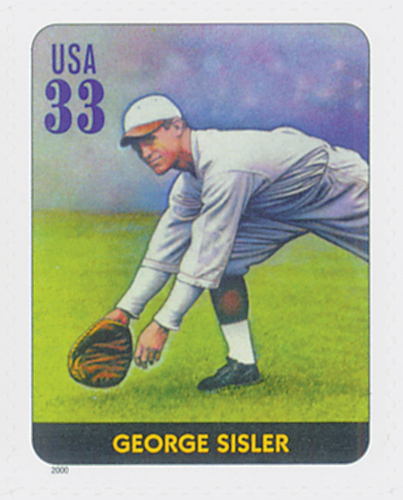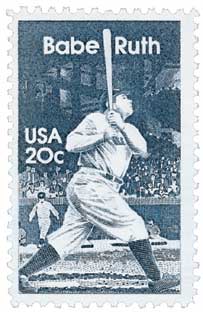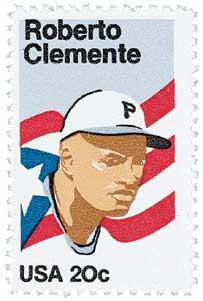
# 3408e FDC - 2000 33c Legends of Baseball: George Sisler
33¢ George Sisler
Legends of Baseball
City: Atlanta, GA
Quantity: 11,250,000
Printed by: Ashton-Potter (USA) Ltd
Printing Method: Lithographed
Perforations: Serpentine die cut 11.25
Color: Multicolored
Death George Sisler

Baseball great “Gorgeous George” Harold Sisler died on March 26, 1973. An agile first baseman, Sisler was one of baseball’s greatest players in all areas – fielding, throwing, hitting, and base-running.
Sisler was born on March 24, 1983, in Manchester, Ohio. His town didn’t have a high school, so when he was of age, he moved to Akron to live with his brother and later family friends so he could attend. While in school he played baseball, basketball, and football, but was most focused on baseball.
The Pittsburgh Pirates recruited Sisler in 1911 to play on their minor league team, but he never played. He ended up going to the University of Michigan and pitching for their team. While there, he earned a degree in mechanical engineering and was a three-time Vanity Fair All-American. After he graduated, Sisler was being scouted by several major league teams, but he still had his contract with Pittsburgh, and they wouldn’t release him. Sisler’s college coach Branch Rickey wrote to the league’s governing board and they ruled the contract was illegal. Rickey then signed Sisler to his team, the St. Louis Browns.

Sisler made his major league debut on June 28, 1915 as a relief pitcher against the Chicago White Sox. He pitched for three innings, denying the Sox from scoring and striking out two batters. He also had his first major league hit in that game. Sisler then had his first major league start on July 3, pitching for the whole game and striking out nine batters. After that game, the manager began transitioning Sisler to playing first base. By the 1916 season, he was playing first base full-time. That season he led the team with a .305 batting average and 177 hits.

In 1917, Sisler had a 26-game hit streak with a batting average of .422. In 1918, he enlisted in the army and served in the Chemical Warfare Service unit with several other baseball players. Sisler still managed to play in 114 games that season and led the league in stolen bases (45) and had the third highest batting average in the league.

Sisler played every inning of every game in 1920 and had league leading record of 257 hits with a .407 average. He had the highest batting average ever for a player with more than 600 at-bats. Sisler held that record until 2004. Sisler had his best season in 1922. He had a .420 batting average (the third highest of the 20th century) and led the league in hits, runs, stolen bases, and triples. He was also the first recipient of the league’s Most Valuable Player Award. Many baseball historians considered his 1922 performance to be one of the best seasons for any player in history.
Sisler then suffered from a severe case of sinusitis that gave him double vision and forced him to miss the entire 1923 season. Doctors told him he’d never play again, but Sisler was determined and returned to the field in 1924. He never achieved the same level play he had before the sinusitis, but he still hit over .300 in six of his last seven seasons and led the league in stolen bases for a fourth time in 1927.

Sisler was traded to the Washington Senators and then the Boston Braves in 1928. He finished his career with the Braves in 1930. Over the course of 16 years, he had a lifetime batting average of .340, stole 375 bases, and had more than 200 hits in six seasons. He also holds team records for the St. Lois Browns (today’s Baltimore Orioles) for career batting average, triples, stolen bases, batting average, on-base percentage, hits, and total bases in a season.
Sisler was inducted into the Baseball Hall of Fame in 1939 and went on to work as a scout, helping to recruit young players. Sisler died on March 26, 1973, in Richmond, Heights, Missouri. There’s a statue of Sisler outside St. Louis’s Busch Stadium, he has a star on the St. Louis Walk of Fame, and the Browns’ former spring training camp was named Sisler Field.
33¢ George Sisler
Legends of Baseball
City: Atlanta, GA
Quantity: 11,250,000
Printed by: Ashton-Potter (USA) Ltd
Printing Method: Lithographed
Perforations: Serpentine die cut 11.25
Color: Multicolored
Death George Sisler

Baseball great “Gorgeous George” Harold Sisler died on March 26, 1973. An agile first baseman, Sisler was one of baseball’s greatest players in all areas – fielding, throwing, hitting, and base-running.
Sisler was born on March 24, 1983, in Manchester, Ohio. His town didn’t have a high school, so when he was of age, he moved to Akron to live with his brother and later family friends so he could attend. While in school he played baseball, basketball, and football, but was most focused on baseball.
The Pittsburgh Pirates recruited Sisler in 1911 to play on their minor league team, but he never played. He ended up going to the University of Michigan and pitching for their team. While there, he earned a degree in mechanical engineering and was a three-time Vanity Fair All-American. After he graduated, Sisler was being scouted by several major league teams, but he still had his contract with Pittsburgh, and they wouldn’t release him. Sisler’s college coach Branch Rickey wrote to the league’s governing board and they ruled the contract was illegal. Rickey then signed Sisler to his team, the St. Louis Browns.

Sisler made his major league debut on June 28, 1915 as a relief pitcher against the Chicago White Sox. He pitched for three innings, denying the Sox from scoring and striking out two batters. He also had his first major league hit in that game. Sisler then had his first major league start on July 3, pitching for the whole game and striking out nine batters. After that game, the manager began transitioning Sisler to playing first base. By the 1916 season, he was playing first base full-time. That season he led the team with a .305 batting average and 177 hits.

In 1917, Sisler had a 26-game hit streak with a batting average of .422. In 1918, he enlisted in the army and served in the Chemical Warfare Service unit with several other baseball players. Sisler still managed to play in 114 games that season and led the league in stolen bases (45) and had the third highest batting average in the league.

Sisler played every inning of every game in 1920 and had league leading record of 257 hits with a .407 average. He had the highest batting average ever for a player with more than 600 at-bats. Sisler held that record until 2004. Sisler had his best season in 1922. He had a .420 batting average (the third highest of the 20th century) and led the league in hits, runs, stolen bases, and triples. He was also the first recipient of the league’s Most Valuable Player Award. Many baseball historians considered his 1922 performance to be one of the best seasons for any player in history.
Sisler then suffered from a severe case of sinusitis that gave him double vision and forced him to miss the entire 1923 season. Doctors told him he’d never play again, but Sisler was determined and returned to the field in 1924. He never achieved the same level play he had before the sinusitis, but he still hit over .300 in six of his last seven seasons and led the league in stolen bases for a fourth time in 1927.

Sisler was traded to the Washington Senators and then the Boston Braves in 1928. He finished his career with the Braves in 1930. Over the course of 16 years, he had a lifetime batting average of .340, stole 375 bases, and had more than 200 hits in six seasons. He also holds team records for the St. Lois Browns (today’s Baltimore Orioles) for career batting average, triples, stolen bases, batting average, on-base percentage, hits, and total bases in a season.
Sisler was inducted into the Baseball Hall of Fame in 1939 and went on to work as a scout, helping to recruit young players. Sisler died on March 26, 1973, in Richmond, Heights, Missouri. There’s a statue of Sisler outside St. Louis’s Busch Stadium, he has a star on the St. Louis Walk of Fame, and the Browns’ former spring training camp was named Sisler Field.












